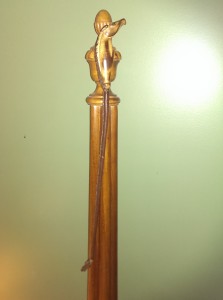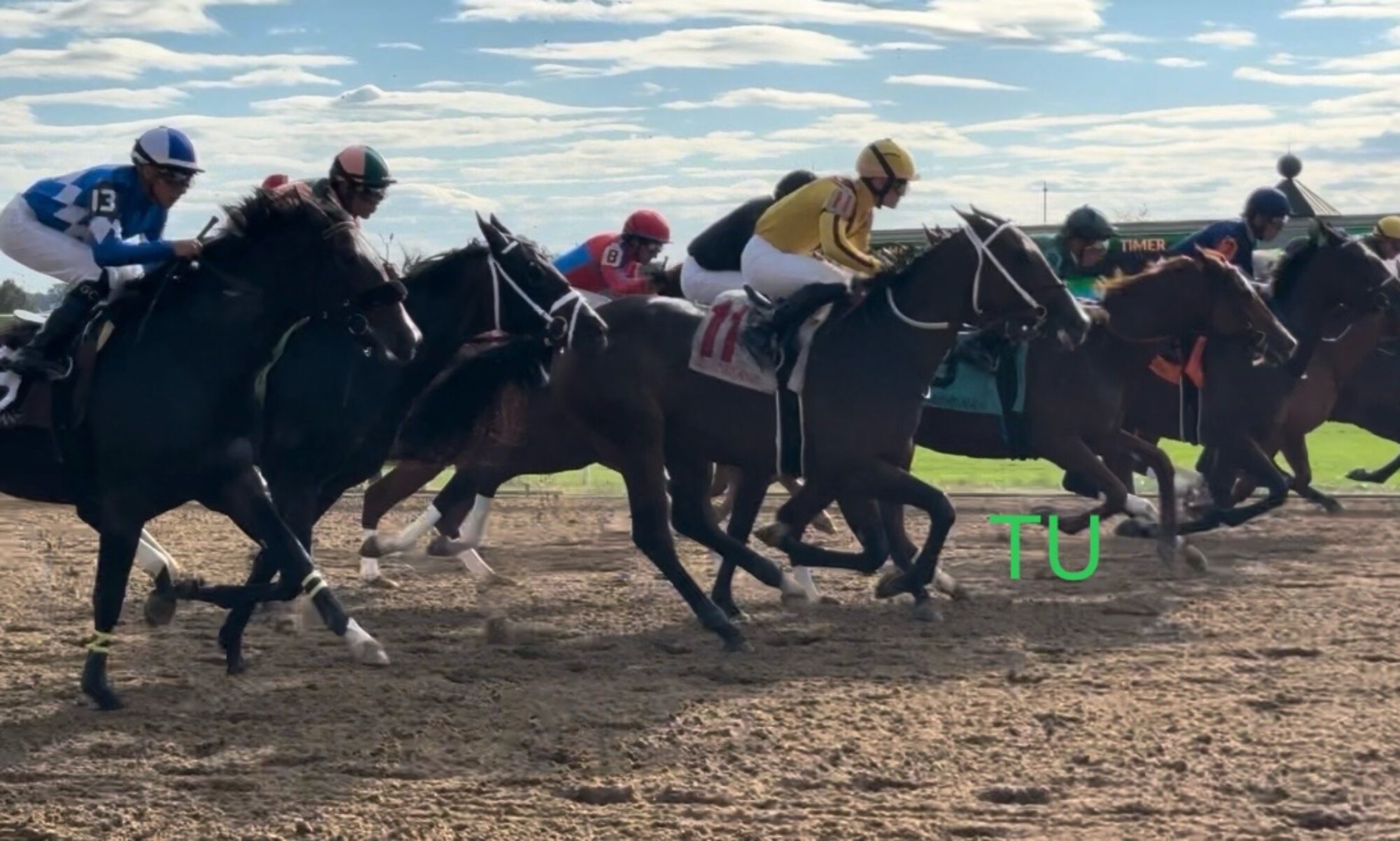 Tonight I am looking into a controversial topic that is surely worthy of exploration. Why do Thoroughbred horses get whipped at races and even training? Do the whips hurt? Is whipping a horse necessary?
Tonight I am looking into a controversial topic that is surely worthy of exploration. Why do Thoroughbred horses get whipped at races and even training? Do the whips hurt? Is whipping a horse necessary?
I am a huge animal lover. Anything that brings harm to an animal is offensive to me. Despite my affection for horses I do not ride them. At a young age I was overwhelmed with compassion for the horses I had the opportunity to ride. My young mind could not grasp that a horse could or should carry the weight of a human. I would not put the saddle on tightly either. No way was I going to give a horse a belly jab to get a better fit, so off to the side I slid. I prefer to watch. There are few other thrills more exciting than viewing a live horse race. When the weather is right I walk right up to the finish line, at my favorite track, and wait there. Then, I hear the frightening crack of the whip and I cringe a little. So I must know, what is all the whipping about?
It seems horses have always been whipped from the time man first started domesticating the animal. I do not know when the public began to balk, but by 1980, in England, there became a large demand for change. That sentiment was felt in many countries worldwide including the United States. By 2007, in this country, padding the whip became a requirement. It is interesting that many of these changes are driven by public opinion. This public has two opinions however. One group feels that if a jockey does not whip the horse that they are not really trying hard enough to win. The opposing public feel it is unnecessary, even abusive. It seems from the jockey’s prospective that most enjoy having an option. Great races are won both ways. For the jockey, it may be a matter of protecting the horse and rider.
Because some horses wear blinders, or due to the adrenaline and crowding on the track, many Thoroughbreds may need a little help from the riders. The jockey may need to steer the horse away from running straight on a turn, into a rail, or colliding with another horse and rider. Whipping is one way to cue a horse. However, there are other ways to cue a Thoroughbred too. Verbal clicking and coaching is one method to directing a horse. Some horses respond well to nudges. Often a change of posture in the saddle can be a useful alert. Shaking on the reins can make the horse aware. Note that some horses do not respond to whipping anyways.
Probably to soften the blow, poor choice of phrase, the industry has started to stray from the word whip. Alternative names are sticks, encouragers, ticklers, feather dusters, persuaders and more commonly, riding crops.
Apparently, apprentice jockeys use the whip more than seasoned jockeys. One of the most famous jockeys, Pat Day rarely whipped a horse. Gabriel Saez whipped Eight Belles 10 times in the 2008 Kentucky Derby where she placed and then immediately broke both ankles and was euthanized on the spot. That event initiated an all time low in moral for the American public towards the racing industry.
That same year, Ellis Park in Western Kentucky started using new whips. Later that fall, Keeneland in Lexington, KY, started to experiment with 30 different whips. In America the Association of Racing Commissioners International (ARCI) and the Jockey Club create the design for whip rules but they leave each racing jurisdiction to set their own guidelines. The ARCI chose to use trimmed fiberglass rods taped with duct tape, wrapped in fabric , weighing under 8 ounces with a minimum shaft of 0.5 inches in diameter and the flap may be 0.8 to 1.6 inches wide. The handle is rubber and the popper is applied with glue. Kentucky Regulatory Statutes have the same specifications and a maximum length of 30 inches, a flap max of 1/2 inch wide, no binding allowed within 7 inches, use of shock absorbing material is required, and stingers/projections and metal is prohibited. Keeneland makes a Condition Book for each meet. They have the same requirements and they insist that inspections may be made by stewards or scale clerks.
Other ARCI rules are that jockeys have the choice to use the whip or not. If they choose not to use it, that choice will be announced prior to the race. They must first show the horse the whip and give the animal response time before using it, they may only use it again if the horse responds. The whip is to be used in rhythm with the stride. The shoulders or hind should only be struck if for safety. No whipping may occur after the race unless it is used for safety. The whip is not to be used excessively or to cause breaks in the skin or welts. If the horse is not in contention to show or already at its maximum speed it should not be whipped. Finally, a jockey may not whip another jockey or the horse the other jockey is riding, duh.
Many other countries have their own rules too. Some have maximum consecutive whip counts. Many require stride breaks between whips. Frequently the jockey is only permitted to raise their arm so far. Others chose to only allow whipping in certain stages on the race. Also, it is not uncommon to have a veterinarian examine a horse post race for marks and bleeding.
Australia did a widely shared retrospective study in 2011. Five races were watched with 48 Thoroughbreds participating. The study was funded by the Royal Society for the Prevention of Cruelty to Animals. The conclusion was that increased whip was not associated with a significant variation in velocity as a predictor of superior placing at the finish ( see An Investigation of Racing Performance and Whip Use by Jockeys in Thoroughbred Races 1/2011 for full disclosure ). This study was applauded by many and equally rebuked by others. The Jockey’s Guild of Nicholasville, KY sent an e-mail that was not in approval. Some think the sample size was too small, that a retrospective study is not proper and that the funding was from a biased organization.
For certain changes are still in the making. The new whips make an impressive popping sound but supposedly do not inflict pain. That makes some jockeys whip even more and harder. If whips were banned by all in training and racing it would level the playing field but often a jockey does not practice with a horse prior to a race so they do not have the relationship to maximize alternative cueing methods and find the whip the best way to keep horse and self safe. California is awaiting final approval in early 2015 to disqualify a horse if it receives more than 3 consecutive whips in a race.
To whip or not to whip? That is the question.
Share This:

Interesting article. I have always wondered the same thing. I have also cringed at the finish area of Keeneland when I hear that sound. I am glad to know there are regulations and changes.
Angie, I am glad you enjoyed this post. I appreciate the feedback. Please, feel free to ask me anything else you want to know about Thoroughbreds and I will be glad to try to find an answer.